Spring has Sprung
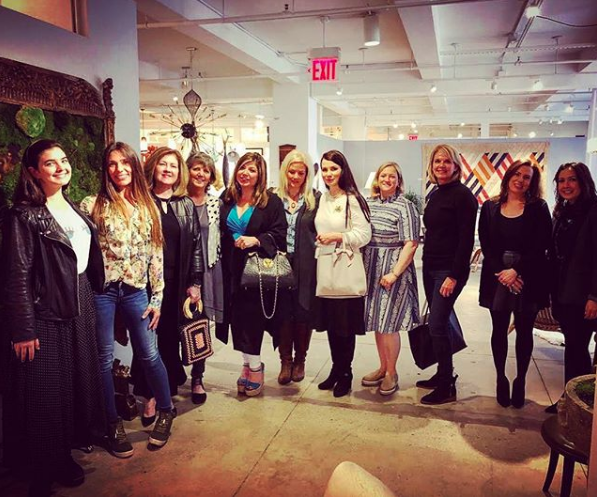
So when she reached out to me in regard to her inaugural mentoring program and asked if I would speak to a group of women who were in the antiques business, I responded with a resounding YES. Even though these past few months have been trying at best and disappointing at worst. And even though my steps backwards had begun to feel less like a cha-cha and more like a marathon run in reverse. I was ready to dig deep into all that I knew and share it with this wonderful group of ladies. A group of ladies who I really need to thank because they allowed me to be part of their journey in the business of antiques. We each walk our own path, but moments like this when we come together as one to encourage and inspire are truly remarkable. Sharing my story with this group reminded me that I still have much work to do. That I have made promises to myself and my daughters. That I have discoveries to make and more stories to share. And later on that afternoon after the program, I sent an email to the group. I'll share it with you, "I’m writing this as I sit on the subway heading to pick up my girls from school. And I’m sitting here totally inspired by your enthusiasm and passion. I’m sitting here reimagining the possibilities that first drew me into the antiques business all those years ago. I’m sitting here thankful to have spent a few hours with all of you. It’s the community of strong, positive women who are our most valuable resource. I would like to extend an invitation to each and every one to stay in touch. To stay connected. To stay part of this community. I’m looking forward to cheering your successes." So on that note, take some time today to reach out and connect, it does a world of good for us all!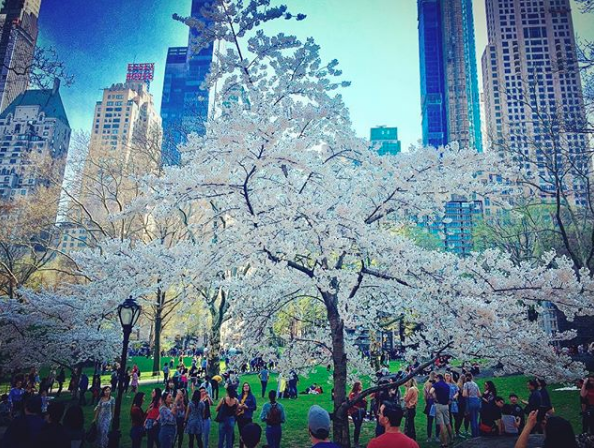
Show Houses a Plenty
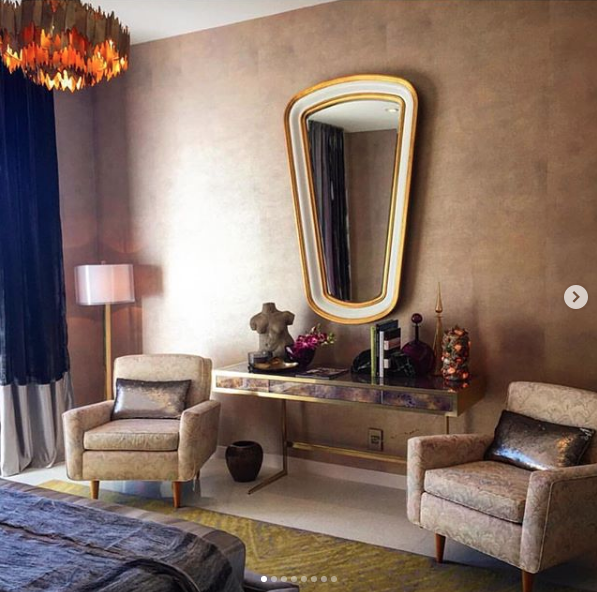
Justin Shaulis - Christopher Kennedy Palm Springs Show House
Florence Knoll armchairs, Vintage concrete torso sculpture, One of a pair of rock / stone / quartz / crystal lamps, Vintage brass floor lamp,
Vintage brass vase, Vintage brass accessories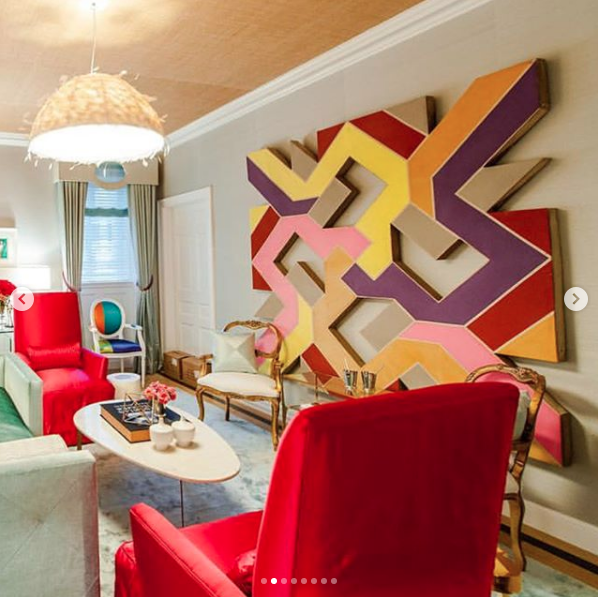
Patrick Hamilton - Holiday House New York City Show House
Vintage 1970's shaped canvas abstract painting by Sidney Guberman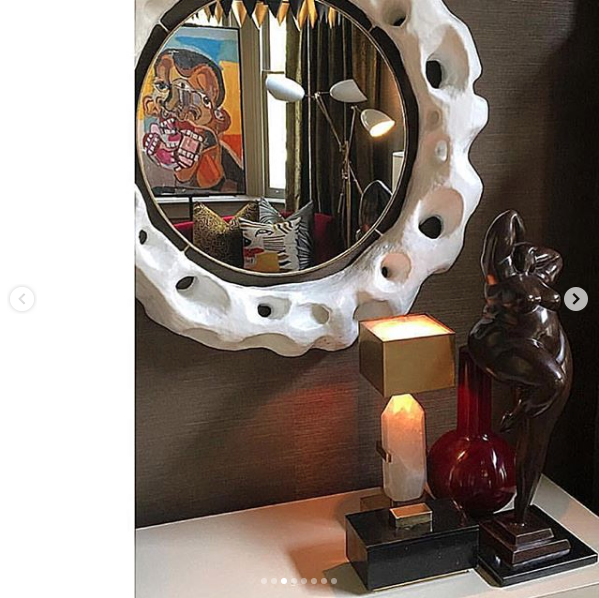
Michel Smith Boyd - Southern Style Now New Orleans Show House
Contemporary portrait painting by Clintel Steed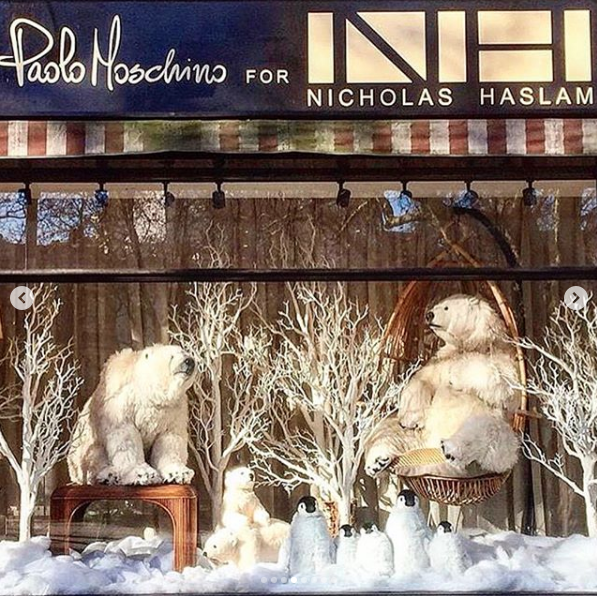
Paolo Moschino / Philip Vergeylen - Nicholas Haslam London Showroom
One of a pair of vintage Gabriella Crespi style split reed bamboo side tables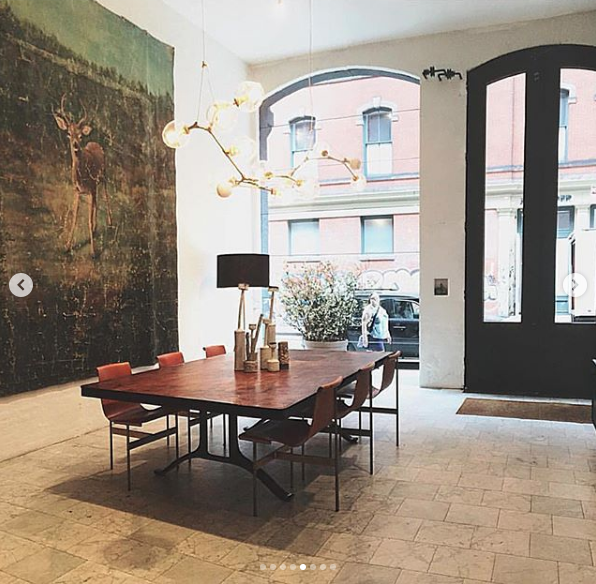
Tyler Hays - BDDW New York City Showroom
One of fourteen antique hand painted oversize mural paintings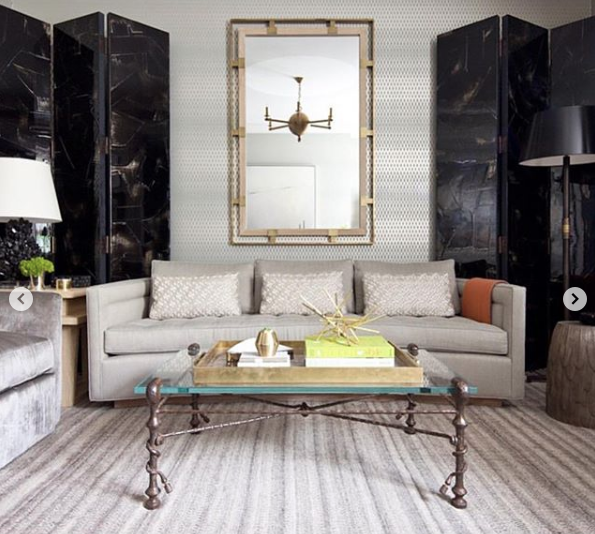
Thom Filicia - Sedgwick & Brattle New York City Showroom
Vintage cast iron sculptural coffee table with custom lucite top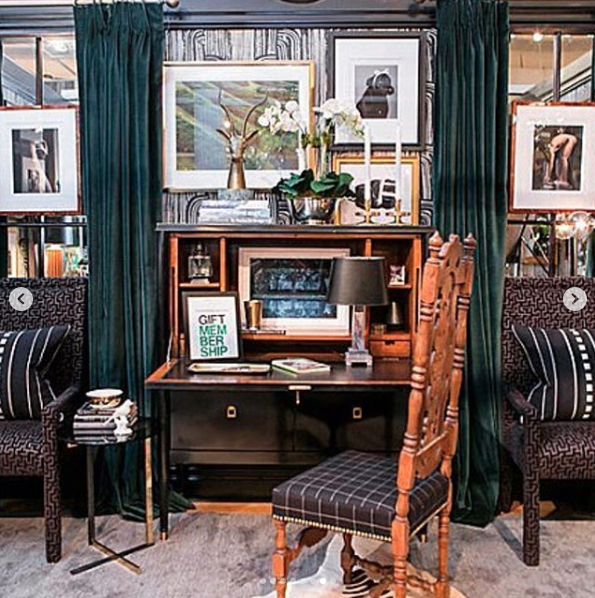
Ron Marvin - Design on a Dime New York City Housing Works Showroom
Vintage brass sculptural antelope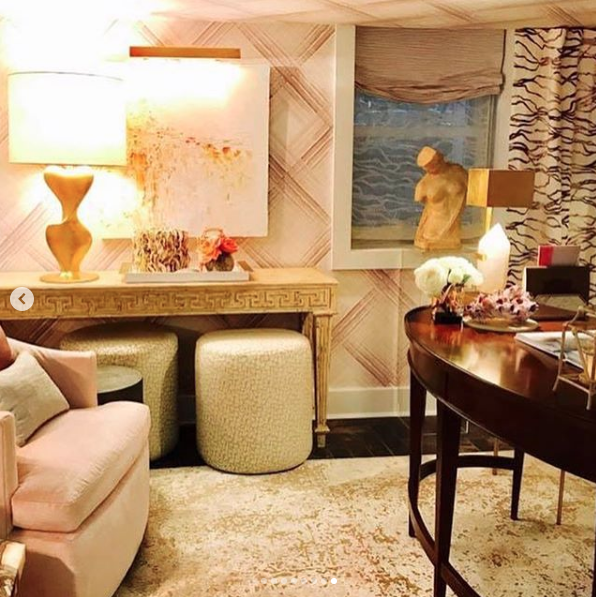
Patrick Hamilton - Southern Style Now Savannah Show House
19th Century marble sculpture of Psyche, Vintage abstract gilt bronze sculpture
House Proud, House Beautiful
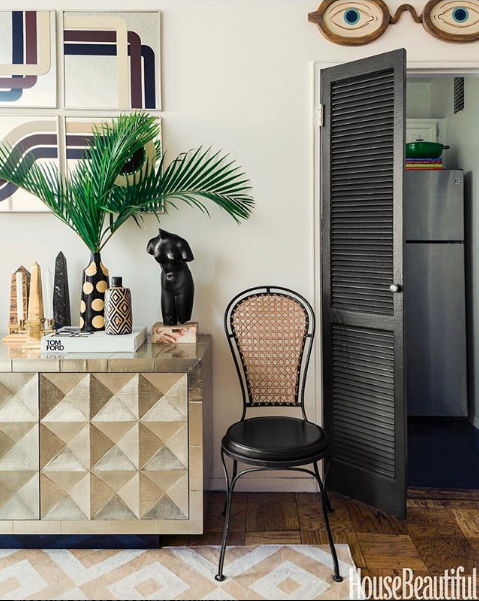
PHL – BOS – GSO – LHR
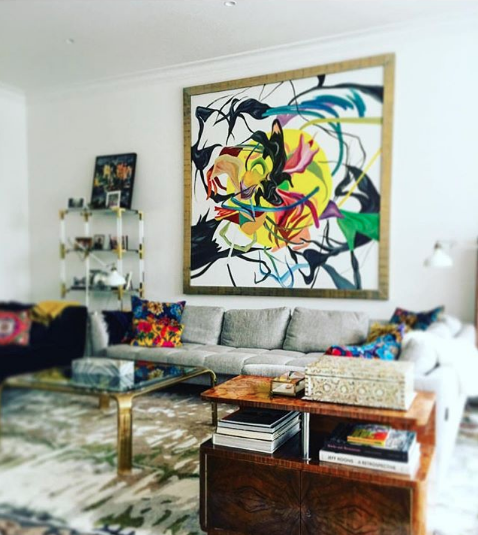
Let's Talk about... Frames
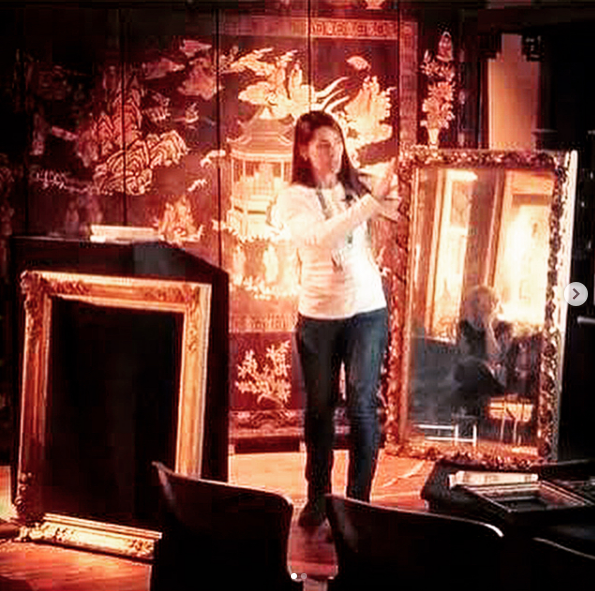
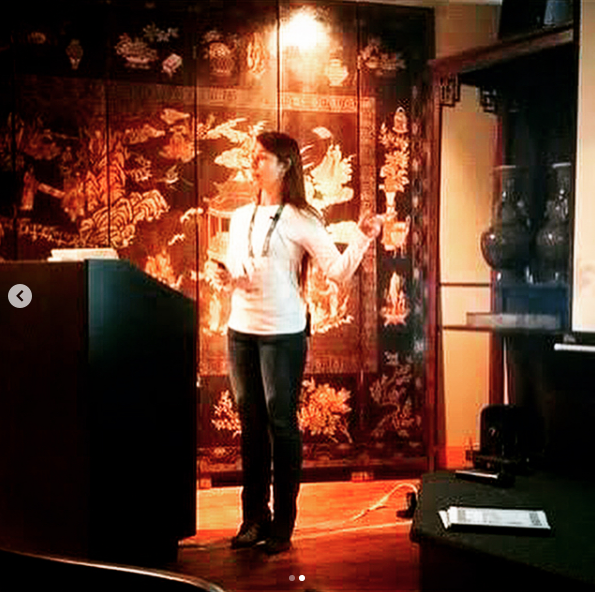
In the Beginning...
20th Century by HKFA... Designer 20th Century Furniture. American Art. Mid-Century Paintings. Antique and Modernist Picture Frames. Vintage Industrial. 19th Century Antiques. Lighting, Lamps, Chandeliers, Sconces. 20th Century Designer Works. Garden Furniture. Important American Paintings and More...
Heather Karlie Vieira, Hustler...
Please provide a background on your company and the year it was founded.
1.) It was a cold and crisp Saturday morning in February when I stepped out of my East Village sublet apartment and onto the streets of Manhattan. The club kids and delivery men shared the same sidewalks as one group made their way home and another group began their day. It was 4am and I was headed to the 26th Street flea market in Chelsea. Two night prior I had packed up my life into a rental truck and made the ninety mile journey from Philadelphia. A short two hours but surely a world apart. It was while I was living in Philly, working as a waitress, that I had had the realization. The realization that my childhood weekends spent with my family were truly the moments that were inspiring. The early mornings spent looking at Queen Anne and Queen LP’s, chandeliers and ball gowns, brass side tables and ship’s models - had laid the foundation of what was to be my moment of realization. I wanted to be an antique dealer. So, in February of 2002, I packed myself up and headed to New York City. With a six month sublet that I had paid for in full and six hundred dollars to my name, I was determined to make a place for myself in The Big Apple. That cold and crisp Saturday morning was to be the first day of my new career - only I really didn’t know what to look for or what I’d find. Arriving to the flea market shortly after 4am I found myself in the center of a parking lot near the intersection of 26th Street and 6th Avenue. A parking lot bustling with vendors and dealers, buyers holding flash lights who were pushing their way to the latest vehicle that had pulled in to their assigned space and started to unload. It was when the items were pulled from the vehicle that the excitement would begin. Anticipation and tempers ran high as buyers jockeyed for position to be closest to the fresh merchandise. But this crowd was a fickle one. As each new vehicle pulled in, the crowd of dealers would turn on their heels and dart to the latest vendor. Each seller would command their attention only until the next vendor would arrive. To me it was like watching a dance - or more like a school of fish who would ebb and flow, turn and move - all with one purpose, to find the next treasure. And I too was there for treasure - but what? I stepped in and out of the fray, watching and seeing all that was on display. I was waiting for that next all important realization - what type of antique dealer was I to become?
What was the initial spark or idea you had to start your company?
2.) It was then that it happened. I stumbled across a pile of dusty old picture frames. They were stacked up against the wall like so many glittering relics - gold leafed, accentuated with ornament - they were it! Beautiful and useful, architectural and artistic, practical and decadent - the picture frame was to become my inspiration, my passion, my business. And just like that, Heather Karlie Fine Art was born. But wait a minute! What did I know about picture frames? Not much. But I did know enough to follow my gut. And hold on just a sec - who exactly would be buying all these picture frames from me? Well, I knew that the Upper East Side was home to some of the best art galleries, specializing in everything from Old Masters to Contemporary works. There were sure to be a few among them who needed period picture frames. So I invested some of that six hundred dollars into a few frames that I considered to be the best of the bunch. By now, the sun had risen and all of the days offerings had either been snapped up by the early morning buyers or were being considered by the 'late morning’ arrivals. These were the folks who had strolled in well past nine with a specialty coffee drink in one hand and a French pastry in the other. It was at this time that I headed home to officially open up shop as HKFA. Spending the morning online, I emailed every Upper East Side art gallery and introduced myself as a new source for important antique and modern period picture frames. Then I sat back and waited for the requests to pour in. Hmmm. Something must have happened to my internet connection. Maybe my email server was down? So I turned off my laptop and waited. It was a very long minute. Getting it up and running again, I quickly opened my email. Success! An ‘out of office’ reply. Well at least it was something. Feeling like I needed a break, I left the world headquarters of HKFA and went out for a coffee and bagel. Seemed like a very ‘New York’ thing to do. Back at the office with a full belly and a renewed sense of confidence, I opened up my email. And there it was. An actual response from a New York City Upper East Side gallery, “Please bring a selection of your frames to the gallery at 10am on Monday”. Short, sweet and full of promise. I couldn’t wait to go to sleep just so I could wake up even earlier the next day and go back to the flea market on Sunday to see what other treasures awaited me. I mean, now I was in business.
How has your brand story changed since you started your company?
3.) Being in business in New York City means that things can change in a New York minute - which I can tell you is quite a bit shorter, unless you’re waiting to open your email. Days turned to weeks, weeks to months, months to years - but all going by in a flash. I had built a business specializing in sourcing rare and important picture frames and selling these frames to the City’s top galleries. And what did the years of being in business in New York City teach me? That the only constant is change. The City, the art world and the frame business were changing and so was I. I had met my husband and started a family, I had lived in Rio de Janeiro, I had opened my eyes to the connection between frames and art and furniture and lighting and more! I had a new inspiration. My inspiration came from the history of picture frames. During the 1600’s, 1700’s and 1800’s the picture frame was considered as furniture. The frames were not tied to the artwork, but rather to the prevailing style of furniture. As tastes changed and new styles came into vogue, the frames were also changed because they needed to be in the same prevailing taste - the architecture of the frame was tied to the architecture of the room. A ha! It was time to broaden my horizons. I began to buy furniture, lighting, art, accessories and I began to see the design that connected these pieces. The common thread that wove its way through history creating a tapestry that illustrated the beauty of the individual pieces viewed as part of a larger installation. Now when I was set up and selling at top antique shows, I was showing a complete look - furniture, lighting, art and accessories - a room setting in which I could explore the historical basis of the 20th Century designs I was selling. And thus was born 20th Century by HKFA. My years spent specializing in picture frames built the foundation for my business in fine and decorative furnishings. Taking a step back and seeing the whole room, but keeping a concentrated focus and perspective was my natural progression. Remember folks, the only constant is change. And if you want to stay ahead of the curve, you’re going to need a strong base to draw from.
What do you think has been the key to your success?
4.) And I feel fortunate to have a strong base - which is a big part of building my business and my brand. You see, I’d like to show folks how contemporary interior furnishings often have a strong foundation in historical design. That the key elements in today’s interiors are oftentimes based on a design from the past century - or even farther back. For each generations contemporary style has a strong base in the previous generations history. A key to the growth of my business is that understanding. And the understanding that each day presents an opportunity - an opportunity to explore more of our history through furniture, lighting, art and accessories. The design of our time is constantly evolving and changing. And sometimes to see the future, it’s best to look to the past. Antiques, by their very definition, are always becoming, evolving and changing. They are often defined as being something that is at least one hundred years old - and as time passes, each year brings new items into that definition. So for me, looking to the past and understanding its importance is another key to remaining relevant in the antiques business. And this is not mine alone and I was certainly not the first to see it. Diana Vreeland is quoted as saying, “There’s only one thing in life, and that’s the continual renewal of inspiration.” A huge source of my inspiration comes from those weekends spent at country flea markets as a child, from looking to the history of the object that was to spark my initial dream, from the only constant which is change. And that key is always close to me - for it is something that keeps me curious. All of those 4am adventures, early morning wake ups (and staying up really late) were another key to my business. Because each of those mornings I’m heading to the flea markets I’m never guaranteed to find anything - but I am always guaranteed to have a continual renewal of inspiration. It’s the hunt for a treasure - something grand and significant, something delicate and simple - but having a strong base, an open mind and a curious nature are some of the best tools of my trade and keys to my business.
Did you have any naysayers when starting your company and what did they tell you?
5.) Starting my business and telling my friends and family of my plan all those years ago in 2002 while living and working as a waitress, I was met with a cool reception. All were concerned as to whether I knew what I’d need to follow my dream and if I had the tools. But treasure hunters are generally not a practical bunch - they are dreamers, idealists and gamblers. To say that their words fell on deaf ears is an understatement. I could hear only my own thoughts - those thoughts of taking a bite out of the Big Apple, of following a path without using a map or compass, of having the chutzpah to go with my gut. And I’m sure that my friends and family saw the determination in me - that coupled with my timing of sharing the news only a week or so before leaving was all that I needed to say. And what happened once I arrived in NYC you ask? Those ‘jaded’ New Yorkers must have considered my small town dream to be the stuff of a made for TV movie. Hardly. For I was welcomed into a group of other dreamers, idealists and gamblers. We were all betting against the house and each of us ready to hit it big. New Yorkers are like no one else. They are the inhabitants of an island, an island of monuments and history, and island of culture and freedom, an island of treasure. My colleagues and I each followed our own paths, criss-crossing the island and looking for the X that marks the spot. And what advice did we have for each other? Well, non really. Not that we played our cards close to the vest, it’s that antique dealers encourage one another through stories and tales. Like a jolly group of pirates on the high seas searching for treasure and regaling one another with fantastical stories of the best painting, suite of chairs or piece of jewelry that they uncovered in the most unlikely of places. And it was all of those stories that inspired me to build a strong base, always keep an open mind and future my curiosity. So let the naysayers have their moment for you are listening to your own inspiration.
What was the biggest obstacle you had entering the market with your product/service?
6.) And that voice must rise above the din, for there will also be people building walls to close you in. To contain you. To stifle you. Breaking through, going around, above or under - the walls must not hold you in. I, too, had my share of obstacles. And those obstacles come in so may forms - whether it was the day to day life in New York City, a run of bad luck or bad timing when searching for merchandise or the self doubt that creeps in and tries to construct another wall - I knew that my dream was bigger than all of it. But the greatest obstacle would always be the learning curve. The becoming while building was and always will be a driving force in the entrepreneurs schooling. Or as I like to call it, trial by fire. For my business education did not include textbooks, online courses or classrooms - it was spent taking chances, searching for treasure and often times coming up with a whole new inspiration. And that in and of itself was at times an obstacle. Learning and a natural curiosity would try to divert me from my focus. Digesting the stories of my colleagues who had made tremendous scores in other areas of the business would cause an ache within me. A pang if you will. Could my gut be leading me down the wrong path? Was a specialization in antique and modern picture frames too narrow a field? The perception of success can be one of the greatest obstacles of all - but I would not let that stop me. Instead, I celebrated their successes and used them to buoy my spirits. I dug deep and planted my feet firmly on the ground. I invested in trips to some of the world’s best museums to see the best examples of frames. I invested in catalogs and books and spent hours pouring over the images and descriptions of frames. But most importantly, I welcomed the obstacles - for they were not walls but would be the building blocks that I would use to fortify my position. To build a strong foundation. To have the courage to specialize in a field. To create a business in the heart of New York City based only on my dream and six hundred dollars. And the obstacles will continue and they have continued. I have encountered the obstacles of growth, of expanding my scope and of building a brand. 20th Century by HKFA is an important selection of well curated 20th Century finds - this leaves the door open to history. To 100 years of design and decor. To learning something new each day while maintaining focus. To becoming while building. So I continue to see obstacles as building blocks - not walls. And I will continue to use them to build my foundation and my base.
What has been the biggest challenge you’ve had as your business has grown beyond the start up phase?
7.) Because the challenges are many - and the growing pains will be sharp. Building my business from picture frames to sourcing fine and decorative furnishings for some of the design industry’s top creatives has been an adventure. One that saw me start a family and move from the City that Never Sleeps to Cidade Maravilhosa, Rio de Janeiro. Challenges abounded. Establishing myself and my family in a new city in a new country. Learning another language. Stepping out from my comfort zone and embarking on a whole new adventure. I was ready for the challenges. I was ready to grow my brand. Returning to my roots, I discovered a new source of inspiration through focus. Buying top examples of mid Century designer Brazilian furniture was to be my focus - learning about the line, the form and the backstory became my passion. I embraced the challenges because I knew that the foundation was there. Returning to the States after some time, my brand was beginning to become. But I was still building so there would be more challenges. Creating a strong online presence was the next step. I set about creating an impactful website and developing engaging social media accounts that were to become my calling cards in a burgeoning field of creative types. And it was here where I faced another challenge - how to stand out as a professional antique dealer. How would 20th Century by HKFA face these challenges? By entering the home furnishings industry through one of the top trade shows. By placing my brand, my inventory, my eye and myself in front of 80,000 design industry professionals. By exhibiting and selling at High Point Furniture Market. And by understanding that collaboration is one of the keys to growth. It was during this time that I began to question how I would continue to elevate my brand solely on my own. I could see that I needed someone in my corner. So I enlisted the professional public relations, marketing and networking connections of Fashion + Decor. This new alliance would further help me to meet the current challenges and prepare myself and my brand to face future challenges. And continue to ride the learning curve.
Give an example of a mistake you made along the way that has led to a valuable lesson.
8.) You know, learning curves are a funny thing. The slow and steady ones allow you to push forward solidly, steadfastly - but slowly. It’s those sharp learning curves, the ones where you’re racing uphill enjoying breakthrough after breakthrough, only to stumble when you’re so close to the next peak. If you can’t hold on you’ll slide backwards down that steep slope and find yourself back where you started. But, if you can hold on, gather yourself up and re-group - you will have learned a valuable lesson. That mistakes and missteps will happen. The proverbial zigging when you should have zagged. My career has had its fair share of mistakes. Take for example and early Saturday morning in 2003 when I was sourcing antique frames in New York City. I had been growing my vocabulary of frames and felt that my knowledge base had grown exponentially in just a short year. Feeling ready to step up to the plate, I bought a near mint example of a period Louis XIII frame dating to the mid Seventeenth Century still retaining its original finish, original size and original hand carved ornament. Worm holes and all. I couldn’t get the $750 out of my pocket fast enough. Beaming with pride I headed directly to my good friend and mentor’s frame gallery in TriBeCa. His eyes widened as he took one look at my recently purchased masterpiece. “It’s a good one”, he said “for a copy.” … What? “Yes, this is a reproduction dating from the early 20th Century. As long as you didn’t pay too much, there’s always a market for these.” Feeling myself starting to slide backwards, knees buckling, stomach lurching I managed to utter, “Ummm.” That was all he needed to hear, for he had also been there. Been in the place where you think you have it all figured out - only to see that you’ve been looking at it all wrong. I took a step back, re-grouped and saw the situation for exactly what it was. A valuable lesson. For even as I was buying the frame, there was a little voice inside me saying to slow down. But I didn’t listen. Because I had been racing uphill along this learning curve, I chalked up this little voice to self doubt. Quickly pushing it away because I couldn’t be bothered - I mean, I had already learned so much about frames in the past year! Luckily this mistake and bravado cockiness was something that didn’t push me backwards. I used it to propel me further, through humility and the understanding that mentors are priceless.
Did you have a mentor early in your career and what key piece of advice did he/she give you?
9.) Mentors are invaluable assets for they have trudged the paths, climbed up the learning curves and made the mistakes. They have been there and are willing to share their stories, successes and failures. I’d like to tell you about four different mentors that I had and that each of the four were connected to the Chelsea flea market. The first is a dealer in important American and European Twentieth Century design - a dealer who has been and continues to be a future in the top New York, Hamptons and Miami high end antique and design shows. This dealer taught me to appreciate the scale, form and line. To believe in the pure beauty of the object. And to buy the best that you can. I think it is Miles Redd who is quoted as saying, “Buy the best, and you only cry once.” Needless to say, I have shed a few tears when shopping through the years and will no doubt continue to do so. But I’ve always had a smile on my face afterwards. The second mentor is a team of specialists in antique and period picture frames. An expert team who devotes their lives and careers to the study, understanding, restoration and appreciation of picture frames. From this husband and wife team of specialists I learned that focus and determination are essential building blocks to creating a strong foundation. And the third mentor is a renowned New York City estate buyer who has bought and sold some of the most iconic antique and decorative furnishings to pass through the five boroughs. He taught me to always look a little deeper and to explore the backstory of each object. He taught me that more often than not, your first offer is your best offer and to always be ready for the next adventure. And the fourth mentor. Ah, the City itself. The City that welcomes so many to test themselves and to dare to dream. This mentor taught me that good things come to those who hustle. And hustle I did. You didn’t think that I simply showed up, opened up shop and sat back while the money rolled in? No. I worked day and night and every weekend. Days spent working for my mentors and seeing clients. Nights spent working at any one of five different night clubs, working till 4am and then heading directly to the flea market. Nights spent waiting on the City’s hottest celebrities and days spent researching and selling the City’s finest treasures. These four mentors gave me the best advice, advice that I’d like to share with you.
What advice would you give young entrepreneurs looking to start their own business?
10.) Trust your eye. It really sounds simple enough, but it’s some of the most profound advice. Trust is one of the most sought after beliefs. It is the belief in reliability, truth, ability and strength. To trust in yourself is to declare to all that you have confidence and conviction. This trust will shine through in your work, your relationships and in your life. And your eye. The window to your soul, your vision, opinion, attitude. Trusting in your vision, opinion and attitude will illustrate to all that you yourself are ‘one to watch’. That you are someone whose work is to be studied, whose relations are strong and whose future is bright. When you trust your eye, you believe in what you are seeing and the way in which you are seeing it. And this vision will change over time as your opinions and attitudes change. But the thing that will always remain constant is you and the way you see things. Whether you are seeing a product, a project or an entire market - your vision is exclusive to you. And you bring your experiences to that moment of seeing. How I trust my eye has to do with how I see the antiques that I am buying. I am seeing each for their individual beauty in the moment. I am seeing each as a work of art and design whose backgrounds can be traced through history. And I am seeing it as part of a larger whole - as an ingredient in the making of something special. Over the past thirteen years I have bought and sold thousands of objects, many of which I can still see in my mind’s eye. And as I look back at them, I can see how they play off one another, how they are influenced by one another and how there is a natural progression to my vision. Each day I think back to my mentors, remembering their advice, I can see their individual vision. And I can see how they each have changed over the years while becoming and building. To remain steadfast in your confidence and convictions while always having a fresh look at the world around you is a sure fire way to create success. Trust your eye and you will always be fulfilled. The future is yours.
Where do you see your company going in the future?
11.) And what about the future? Where do you see yourself physically, mentally, financially? The variables are endless, but the path is clear. Envisioning your future is a powerful tool. By doing so, you’re creating a road map in your head that will guide you as you build and become. When I look back, sometimes I say, “I could never have seen myself here.” - but that’s not really true. For this moment is my truth and it is the culmination of hard work, good luck and great mentors. I am where I want to be. And as I look to the future, I am envisioning 20th Century by HKFA as a brand. A brand whose products celebrate history and embrace the future. A brand that seamlessly blends antique and period furnishings with contemporary designs. Designs which pay homage to the past while serving a true purpose in the present and having longevity to remain into the future. I see 20th Century by HKFA as a curated collection of objects for the home, for the connoisseur and for generations to come. And to achieve these dreams, to build them into becoming my reality will require the constant maintenance of my foundation, the collaboration with creatives from across industries and the belief in myself that I can always trust my eye. I hope you will take part in this journey, that you will build and become your reality and that one day you will look back and see the beauty that you created, whether it was a product, a project or an entire market - you will have made your mark and left the world a more beautiful, more special, more individual place because no one sees things like you do. Thank you for allowing me to share a bit of my story with you. I’m looking forward to writing, creating, envisioning and seeing many more chapters yet to come. The future is ours to see - keep an open mind, a curious nature and always trust your eye!
Heather Karlie Vieira
20th Century by HKFA
Heather Karlie Fine Art
Modern Look Book
Are You Single?
Let's examine your living room. A sofa with a matched pair of end tables on either side with a matched pair of lamps or vases sitting on top. There's a coffee table with a matched pair of something or other on top. Then there's a matched pair of ottomans or chairs on the other side of the coffee table. That's a lot of twos. Then of course, there's the console table with a matched pair of lamps or vases on top and the list goes on. Is having two of something really that much better?
Now, let's back track a bit to how those pieces came to be in your living room. Perhaps you chose them, or your designer. In either case you had to shop. Surely you (or your designer) were out in the market looking for those 'just right pieces' and you came across something perfect. You then asked the seller the price. It was a great deal, it seemed almost too good to be true. Then you realized that it was a single and your hopes were smashed to pieces (a lot more than two I might add). You explain to the seller that you would have bought it if it was a pair. The seller then thinks to himself (or verbalizes if he doesn't want any future business with you) that it wouldn't be that price if it were a pair and is happy to see you move on. So on you go looking for that perfect pair of something with just the right scale and color to complement the sofa. But, please tell me, why does there have to be two of everything?
Sets of dishes and chairs are always in even numbers assuming that everyone who eats or sits in your house is one of a pair. Don't you know any single friends? Apparently our design theory is based on a very simple belief that in order to be something desirable, there must be two. And an exact two. Doesn't that make things a bit redundant in your home? Kind of like only decorating half of your home and then just placing and exact copy on the other side of the room? Seems a bit lazy to me. Why not simply install a floor to ceiling and wall to wall mirror? This will alleviate the problems of finding furnishings in pairs. And it could save you a lot of money in the long run. There's another bonus too, you'll always have someone to talk with! Maybe I'm getting a bit farfetched, so let's get back to the topic.
Symmetry is defined as the quality of being made up of exactly similar parts facing each other. Wow. Sounds sterile. So, let's find out what asymmetry is. It is the lack or absence of balance between the shapes of a thing. Wow. Sounds uncomfortable. I think that we need to rewrite those definitions as they pertain to the antiques and design business. It is just fine to have a sofa with only one end table and one table lamp. This will leave you plenty of room on the other side of the sofa for a floor lamp. Now, both sides are well lit and you still have a place to set down your book. Sitting across from the coffee table, you'll want to have plenty of seating for friends. A long bench or a chaise is a wonderful alternative to pairs of ottomans or chairs. It will also encourage your guests to sit right next to each other! Take a walk through your home and count up the number of pairs, you're sure to use all your fingers and maybe even your toes if your house is large enough. Now, imagine the difference if you'd remove those doubles. Your first inclination may be that your house will be out of balance. No, don't listen. Balance does not equal exact copy. Balance is the way to keep a flow through your home, balance is harmony. There is nothing limiting you to balancing only with an exact replica.
Now imagine the freedom of the dealers in the marketplace. They would no longer be afraid to purchase for resale single items. A great chair. A great lamp. A great vase. And so on. They would have the confidence to buy great items no matter the number. Odd numbers rejoice! For there will be a long line of customers looking for that just right single piece. You may ask how I incorporate this new found freedom into my inventory. Have I been immune to twins? As I must be forthright, I too, have fallen victim to this. I have seen great single items and hesitated to purchase thinking whether or not I'd be able to sell them. I have had pairs of items that I did not want to break up after receiving an offer to purchase only one. Obviously those dealers and buyers were already well aware of the odd number theory. So, how to manage being in business, which does of course require catering to your clients' taste and keeping individuality in your inventory? Join the best of both worlds.
Single vs Pair. Where do I stand you ask? Smack in the middle. I have an all together different requirement for my buying - my inventory often consists of items that are either ridiculously heavy or ridiculously large. They really say something. And I am a firm believer in making a statement. So, let me be the first to say, "Break up!". Get out of your comfort zone and try putting a little unbalance in your balance. You may just find that it opens you up to a whole new world of amazing decor!
How the Furniture Industry can Save Antiques
With my rental truck packed to the ceiling, I headed south to High Point, NC. The furniture capital of the world. New furniture that is. For nine hours I pondered my choice to sign up for this show. Too late to turn around, I journeyed onward. Arriving at the refurbished former factory building, now showroom, I knew this would be a great show. As I unpacked, the buzz grew. Sure, I expected other dealers to be interested, but when I saw groups of Interior Designers strolling through I knew this was something special. The sales began in earnest and stayed strong throughout the week. Designers were choosing pieces for their projects and fawning over my antique and vintage finds. They looked at the seating, lighting and case goods in my booth with fresh eyes and saw potential in every piece. They had become the champions of the antiques business.
Because, for a long time now, the word antiques conjured up a dusty, dank, cramped type of feeling where brown wood is stacked on top of more brown wood. Not exactly the stuff of million dollar renovations. But, it is now. Folks are falling in love with antique and vintage pieces all over again. They are learning how to live with them, decorate with them, incorporate them into the design of their homes. Top designers command their own shows and have reached celebrity status. Oh yes, I know this is not truly new. The icons of earlier generations certainly paved the way, but now we are reaching far more folks. Antique and vintage pieces are no longer reserved for the few, but for the many. It's now quite the norm to see these antique and vintage pieces in homes. And that's because they've been made accessible.
Decorative pieces, even designer pieces, are now de rigueur for interiors. They add a touch of uniqueness, of personality, of history. You see, there is always a great story behind every antique and vintage piece. Whether you tracked it down in a grassy out door flea market field or traipsed through 100's of showrooms - there is always a story. This makes for great conversation in the home as well. Guests will marvel at your (your interior designer's) skill at unearthing such incredible finds.
For the Love of Passion
The idealistic me says that of course you can live a life following your passion. Staying true to what you believe. I do this everyday. The business of antiques and art is my passion. But I am not the creator, I am the dealer. In order for me to be in business there had to have been artists. And they are to whom we owe a great debt. The designers, artists and creators who dared to be themselves. To create for the love of passion.
Brazil in the early 20th Century, I am speaking of the larger more metropolitan cities, was largely influenced by the European and Portuguese tastes. The Colonial style, as it was often referred to, was the dominant taste. Furniture manufacturers employed artisans and craftsman with European training. They created beautiful examples of Louis style furniture in Jacaranda, with caning and other subtle changes that made the furniture perfect for the tropical Brazilian market. And Joaquim Tenreiro was part of this furniture style.
He was employed by one of the largest and most well respected manufacturers of the time. He was using his finely honed European skills to create gorgeous furniture in the European taste. But he was not satisfied. He was earning a living, yes. He was creating furniture, yes. He was following his passion, no. So he struck out and opened his own business. He dared to create a style of furniture that was light, full of grace, simplicity, line, form and function. It beckoned you to sit, to admire, to wonder.
His furniture designs all made use of the indigenous Brazilian woods that are known for not only their beauty, but their strength. And this was also the design behind Joaquim Tenreiro's creations. He met with great success. Opening shops, collaborating with well known architects of the day for their projects - Joaquim Tenreiro was following his passion and earning great respect and admiration. He was pioneering a movement. He was the trailblazer. He was not satisfied.
Sometime in the late 1960's, Tenreiro closed up his shops - retail and manufacturing. He no longer accepted commissions. He would not be making any more furniture. The man who had set a movement in motion and would come to be called the Father of the Brazilian Modernist Design Movement had given it all up. He gave himself over to his art, his painting.
Years pass by. The next wave of designers give Tenreiro much credit and accolades. His designs are touted as the inspiration for a generation of designers. Yet, he remains steadfast to his painting. He created his art, his paintings. But this was done without the same recognition and accolades and purchases that his furniture designs received. He was close to penniless in his later years.
In the end of his life, Tenreiro, the Father of a design movement, was creating birdhouses to pay for his daily living expenses. He died knowing that his furniture designs were important and appreciated, yet he never turned back to them. He stayed with his painting.
Now, maybe the jaded among us will scoff at his loyalty to his passion. But if there is no passion, there can be no art. There can be no design. There can be no creation. Only Joaquim Tenreiro knows the motivation for his choice and surely it is one that only an artist can understand. But, let us look at it another way. Had Mr. Tenreiro continued with his furniture design could he have painted? Could he follow the money and his passion?
Perhaps, yes. Had he continued to produce his furniture, he would have had the income to support his painting. But would his designs have been as inspired? I think the real answer is no. Mr. Tenreiro had no choice. He was an artist and had to follow his passion. And he did find a way to support himself and to continue to follow his passion. Maybe we, because of the nature of the antiques and art business, put too much emphasis on money. Should it be said that we follow the money and artists follow their passion?
And now to further complicate the issue, can there be art without money? If artists' work never reached the secondary market, how could they continue to produce. Surely there must be those willing to purchase the work? How else can art continue? Such a tangled web.
Mr. Tenreiro's furniture now sells for tens of thousands of dollars at both auction and for even more in retail galleries. Because he only produced for a relatively short period of time, his furniture pieces are more difficult to find. And this same rarity can be said of his paintings, but for another reason. Because they were not as much in demand, they did not come to the secondary market as frequently. Perhaps now too his art will receive the same attention from buyers as he had given it all those many years ago. Maybe the money will learn to follow the passion.
Karl Springer, Innovator
Mr. Springer was soon at the head of his own company, producing furniture in a variety of exotic skins, like shagreen - which he helped to bring back into favor, lacquered parchment, metals, bone, faux finishes, veneers and so on. His workmanship was top notch and he constantly sought out new design inspirations - whether from masters like Ruhlman and Frank, or movements like Bauhaus, or peoples like the Ashanti - Karl Springer had an eye to the past and another firmly on the future. And now we come back to the table lamp aforementioned in this post. Hmmm, Karl Springer style or maybe Attributed to or perhaps In the style of... Oh, never mind, what I have is a fantastic homage to a great designer, who - thanks to dealers and imitators, will live on.
This lamp has thin strips of bone veneered to a cylindrical support, a classic nod to one of Mr. Springer's designs. The slender shape of the veneer creates a long, lithe design for the table lamp giving it wonderful presence. With the original, matching finial also veneered in strips of bone - it is a complete look. But Mr. Springer was not the first to create this look... bone, or ivory covered furniture has been with us since the Greek and Roman times.
The ivory covering was reserved for the wealthiest of society. Some examples of their furniture have been preserved because of the eruption of Vesuvius in 79 AD which carbonized some of the furniture, thereby saving it for view until today. The Assyrians were also well versed in the use of ivory to decorate their furniture. The Egyptians, too, decorated their furniture with ivory and examples of it can be found in the British Museum. An interesting note across all cultures is that the ivory that was used on the legs and arms of the furniture often terminated in hoofs and heads of animals. These examples have us travelling back thousands of years. Throughout the Middle Ages and into the Renaissance, one can see examples of bone and ivory covered or inlaid furniture across Europe in Italy, France, Spain, etc and in the East. The Chinese also used ivory extensively in their furniture. And the Anglo-Indian furniture that is still copied to this day is not to be left out. This furniture was inlaid with ivory and bone as well as carved from ivory. The Arab countries too had a version of ivory and bone furniture which is not to be overlooked. The introduction of ivory and bone into and onto furniture and furnishings is a time old tradition.
Mr. Springer certainly gave this tradition a revival and added his own view onto it. By totally covering the surface of furniture and furnishings in bone, and of course goat skin, parchment, shagreen, etc, Mr. Springer created a bold new look that borrowed from ancient history and made it modern.
No Good Deed Goes Unpunished
But that was not to be the case. Instead it was a vibrant show. With happy dealers. And a buying public out in full force. While it wasn't the best show of my career thus far, it exceeded my expectations! The Thursday before the show set up was spent picking up the rental truck (and a rather large piece of furniture that I will tell you about a little later) and my merchandise. I drove to Midtown from the Bronx and arrived at my storage with plenty of time to box up the smalls and carry out the furniture. Well, plenty of time is relative as I arrived at 3pm and the storage closes at 5pm... It went off without a hitch and I was loaded and ready by closing time. The drive back home from the storage was smooth even being on I-95 at rush hour. Good omens all around. After a nice dinner it was lights out early as I had to be up by 3:30am in order to drive to the city and get in line for set up. At 5:30am the line for set up was already long and I took this as another good omen. Dealers were excited to be at the show early and to unload first thing. I was unloaded and parked by 9am. And I had a splinter...
Let's back track to the day before in the Bronx when I picked up the rental truck. The owner of the rental truck agency asked me if I would take a rather large armoire to the show and offer it for sale. I thought to myself, that the more merchandise in the booth the better and I said that I would take it. The ex-football player who works there said that it is 'light when it's on the dolly' and told me that I should have no problems moving it. Feeling like Wonder Woman, I concurred. For those of you who know me, you know what I mean. The armoire was the last piece to come off the truck. As I pulled it out of the truck with my hand truck lined up on the ground, my plan was to gently slide it on to the hand truck... Luckily two dealers seeing this plan unfold, were kind enough to prevent me from being smushed by the humongous armoire.
Okay, now it's mobile and I'm pushing it into my booth. Uprighting the armoire went well enough until I got a tiny splinter in my index finger. I didn't think much of it and I went about setting up my booth getting ready for the weekend customers. After a long day, and a sore finger, I went home feeling pumped for the weekend. Saturday and Sunday were busy days full of sales. One after another, piece by piece, I was happy to sell many large and heavy pieces of furniture. Even though I did need the rental truck for the way home, my load out was super fast. Except for the armoire. Yes, it did not sell and I had to get it back onto the truck. Hiring a couple porters was the plan and the armoire slid happily back into place. But my finger still hurt and was now kind of red.
The next day was Monday and I unloaded the few pieces that did not sell and drove the truck back to the Bronx. After a little price haggling due to the splinter in my finger, we settled up and I went home. My finger was feeling worse and was now really swollen. Reluctantly, I called my Dad who has had his fair share of splinters and I described the situation. After a bit of ribbing, he became serious and wanted to make sure that it was not too infected. It was at this point in the conversation that he reminded me, "No good deed goes unpunished." We had a good laugh and I felt inspired to do a little finger surgery... It took a few more days, but the splinter finally saw its way out of my finger.
So, what does all this mean? That you always have to believe in what you're doing and stay positive because you never know what may come. And also, to be cautious about the favors that you do because they might wind up giving you more than you bargained for.